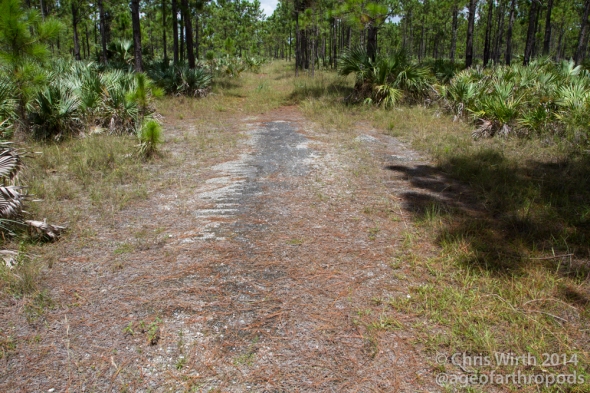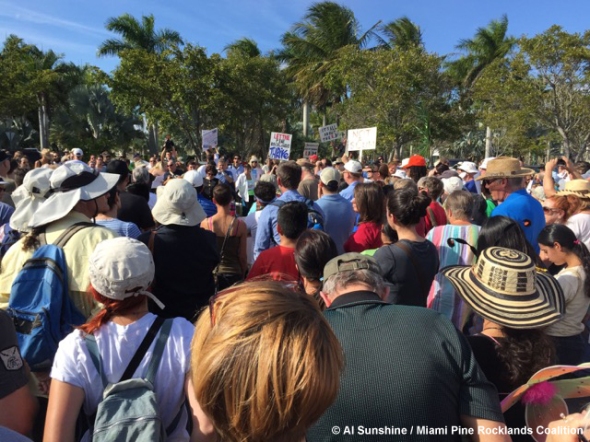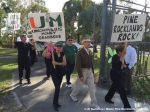The Miami tiger beetle receives “Endangered” status

The Miami tiger beetle, Cicindelidia floridana, and its story are unique. An 18-year-old student first collected the species in 1934 from pine rockland habitat in northern Miami-Dade. Pine rocklands were once the dominant habitat in south Florida, extending from the Florida Keys to the northern border of Miami-Dade County, but development has steadily engulfed this habitat. Today 1.8% of the metro Miami-Dade pine rocklands remain standing.
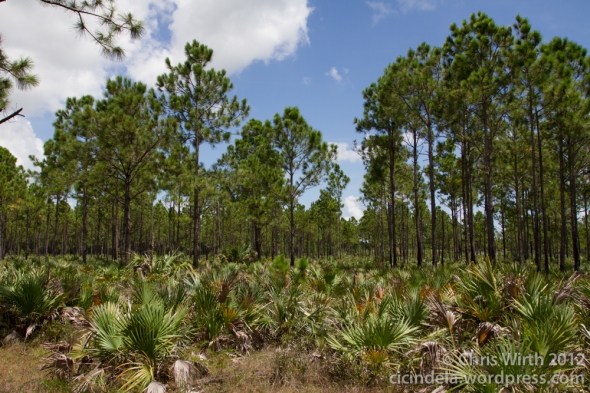
In the context of this widespread habitat loss and seventy years without any beetles observed the Miami tiger beetle was presumed extinct. But, in 2007 a population of Miami tiger beetles was rediscovered in the Richmond Heights pine rocklands, the largest contiguous remaining rocklands in Miami-Dade (below), and in 2015 a second population was found at an undisclosed patch of pine rocklands nearby.
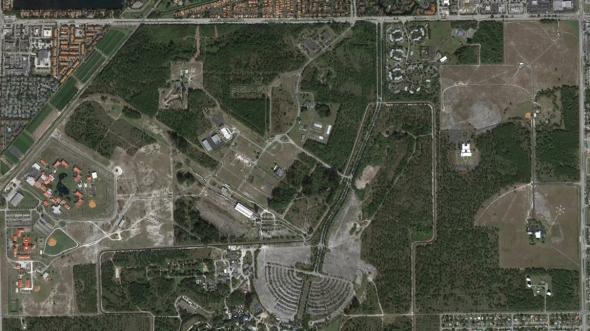
The Miami tiger beetle faces the immediate threats of habitat loss, degradation, and fragmentation from inadequate habitat management and two proposed developments; a mixed-use development, Coral Reef Commons (below) and a major theme park, Miami Wilds.
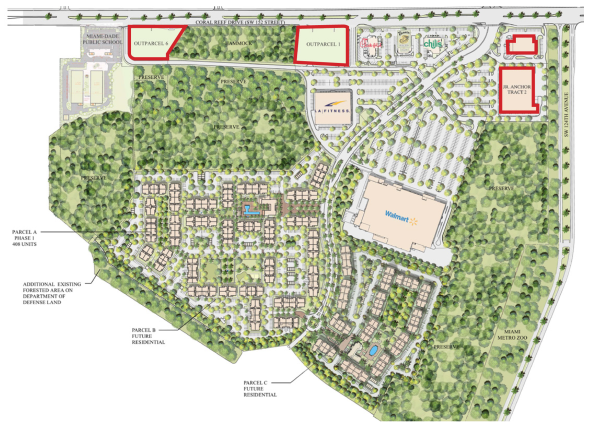
Distressingly, the species is also actively sought by private, non-scientist tiger beetle collectors due to its extreme rarity.
On December 11th 2014, the Center for Biological Diversity, Miami Blue Chapter of the North American Butterfly Association, South Florida Wildlands Association, Tropical Audubon Society, Sandy Koi, Al Sunshine, and I submitted a petition to U.S. Fish and Wildlife Service, urging the Miami tiger beetle be formally listed under the Endangered Species Act.
Today, on October 4th 2016, the Service announced the Miami Tiger Beetle will receive “endangered” status under the Endangered Species Act which will become effective on November 4th 2016.
The Miami tiger beetle joins other Federally listed (threatened and endangered) pine rockland endemics, including the Florida Bonneted bat (Eumops floridanus), Florida leafwing (Anaea troglodyta floridalis), Bartram’s hairstreak (Strymon acis bartrami), Blodgett’s silverbush (Argythamnia blodgettii), Florida brickell-bush (Brickellia mosieri), Big Pine partridge pea (Chamaecrista lineata var. keyensis), deltoid spurge (Chamaesyce deltoidea deltoidea), wedge spurge (Chamaesyce deltoidea serpyllum), Carter’s small-flowered flax (Linum carteri carteri), sand flax (Linum arenicola), and tiny polygala (Polygala smallii).
This species also joins other listed members of the Cicindelinae; there are two endangered tiger beetle species (Cicindela ohlone and Ellipsoptera nevadica lincolniana) and two threatened species (Ellipsoptera puritana and Habroscelimorpha dorsalis dorsalis).
However, no critical habitat has been proposed or designated at this time:
While the designation of critical habitat is prudent, the Service is delaying a proposed designation at this time and expects to complete work on it by September 30, 2017. In addition, there is a proposal to build two developments in the Richmond Pine Rocklands and the Service continues to work with developers.
It would appear that the interests of a few private individuals at Ram Realty and Miami Wilds LLC are taking precedence to the survival of the Miami tiger beetle, its fellow pine rockland endemic species, and the last 1.8% of the metro Miami-Dade pine rocklands. The publicly available plans released by the Coral Reef Commons and Miami Wilds developers show that un-surveyed pine rocklands and Miami-tiger-beetle occupied habitat, respectively, will be paved over and the stifling development will severely limit any management of the remaining habitat, chiefly by preventing controlled burns which pine rocklands and their inhabitants depend upon.
Despite this shortcomings, I sincerely thank the staff members of the South Florida Ecological Service. I’d also like recognize the efforts of my fellow Petitioners and extend my thanks.
Please stay tuned to this blog for updates on the Miami tiger beetle and its habitat.

References
Bousquet, Y. 2012. Catalogue of Geadephaga (Coleoptera, Adephaga) of America, north of Mexico. ZooKeys 245:1-1722.
Brzoska, D., C.B. Knisley, and J. Slotten. 2011. Rediscovery of Cicindela scabrosa floridana Cartwright (Coleoptera: Cicindelidae) and its elevation to species level. Insecta Mundi 0162:1-7.
Cartwright, O.L. 1939. Eleven new American Coleoptera (Scarabidae, Cicindelidae). Annals of the Entomological Society of America 32:353-364.
Center for Biological Diversity. 2016. Four Florida Plants Protected Under Endangered Species Act. Press Release. September 28, 2016
Florida Natural Areas Inventory (FNAI). 2010. Pine Rockland, in Guide to the natural communities of Florida: 2010 edition. Florida Natural Areas Inventory, Tallahassee, FL. 8 pp.
Knisley, C.B. 2008. Current status of the “Miami” tiger beetle. Final Report. October 28, 2008.
Knisley, C.B. 2011. Taxonomy, biology, and conservation of the Florida tiger beetle. Final Report to South Florida Ecological Services Office. February 20, 2011.
Knisley, C.B. 2013. Biological studies of the Florida tiger beetle, 2011-2013. Final Report. April 13, 2013.
Knisley, C.B. 2015. Species assessment of the Miami tiger beetle, Cicindelidia floridana. Revised Report. June 6, 2015.
Knisley, C., M. Kippenhan, and D. Brzoska. 2014. Conservation status of United States tiger beetles. Terrestrial Arthropod Reviews. 7: 93-145.
Natureserve 2016. NatureServe Explorer: An online encyclopedia of life. Version 7.0.
Pearson, D.L., C.B. Knisley, and C.J. Kazilek. 2006. A field guide to the tiger beetles of the United States and Canada: Identification, natural history and distribution of the Cicindelinae. Oxford University Press, New York.
Pearson, D.L., C.B. Knisley, D.P. Duran, and C.J. Kazilek. 2015. A field guide to the tiger beetles of the United States and Canada: Identification, natural history and distribution of the Cicindelinae. Second edition. Oxford University Press, New York.
U.S. Fish and Wildlife Service. South Florida Multi-Species Recovery Plan: Appendix C. Species of Concern and their Associated Community Types in South Florida.
URS Corporation, The Institute for Regional Conservation, and Muller and Associates, Inc. 2007. Miami Dade County Environmentally Endangered Lands Program Management Plan, Part II: Management of specific habitat types, Chapter 1: The pine rockland habitat. Submitted to Environmentally Endangered Lands Program, Miami, Florida by URS Corporation. K.A. Bradley, G.D. Gann, M.J. Barry, contributors.
USFWS Miami Tiger Beetle Hearing: Comments
Introduction:
On December 11th 2014, the Center for Biological Diversity, Miami Blue Chapter of the North American Butterfly Association, South Florida Wildlands Association, Tropical Audubon Society, Sandy Koi, Al Sunshine, and I (the Petitioners) submitted a petition to U.S. Fish and Wildlife Service (the Service), urging the Miami tiger beetle (MTB), Cicindelidia floridana, be formally listed under the Endangered Species Act.
A full year and seven days later, on December 18th 2015, the Service proposed “endangered” status for the MTB, and announced a “hearing for members of the general public to comment on that proposal in person,” as required by Section 4(b)(5) of the Endangered Species Act.
This public hearing was held on January 13, 2016 at Miami-Dade College’s Kendall campus and I flew in from Arizona to attend. I’ve already posted a brief synopsis, audio, and photos from the hearing and in this post I’m going to respond to “three” commenters.
Ram Realty’s Habitat Conservation Plan
Author’s Note: Please excuse this belated and partially off-topic post; I’ve written these comments because I feel it is important to highlight the conduct of Ram Realty and to present the best available facts concerning the potential development of Coral Reef Commons site.
In May 2015 Ram Realty filed a lengthy Habitat Conservation Plan (HCP) with the US Fish & Wildlife Service (USFWS) for the development of Coral Reef Commons (CRC). In a press release Ram claimed the HCP, prepared by Johnson Engineering Inc., is a “science-based document” despite the fact that this document contains grievous misrepresentations of the facts. Below I’ve responded to Ram’s most egregious claims, chiefly the present state of the site and the impacts of the development.
No Take of Listed Species?
In their project overview Ram expresses their intent to secure a 50-year Incidental Take Permit (ITP) while, at the same time, insisting that the CRC development:
[W]ould not result in a take [death] of listed species, nor … adversely impact listed species. (Ram 1-2)
This “no take” scenario is absolutely impossible; almost half (48%) of the site is globally imperiled pine rocklands and a majority of the property is USFWS designated critical habitat for four endangered species. Despite their protestations to the contrary Ram’s HCP explicitly calls for the destruction of endangered plants and the host plant for two endangered butterflies.
Once altered = gone forever?
With efforts to develop globally imperiled pine rocklands met with a public outcry, Ram Realty, developers of the planned Coral Reef Commons, have attempted to portray the Coral Reef Commons (CRC) pine rocklands as largely developed. While this is not true (only 12% of the CRC site is significantly developed), what happens when pine rocklands are altered? Is the site really no longer a place worth preserving as Ram suggests?

In the image above is one of the best maintained Richmond Heights pine rockland tracts, covering over 60 acres. Today it sits just outside of Zoo Miami (and in the footprint of Miami Wilds!) but in the 1940’s it was the site of Richmond Naval Air Station. Below in an image form 1952 you can see the expansive footprint of Richmond NAS.
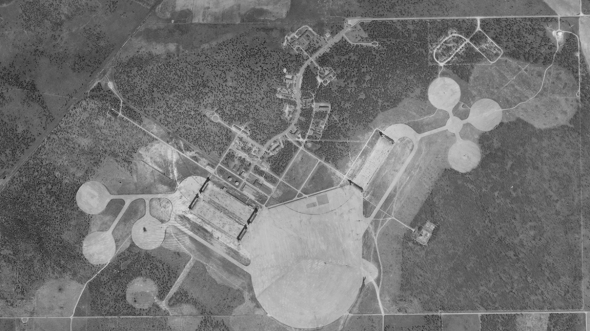
In this side-by-side view you can see the remnants of the blimp mooring pads and the red outline of this 60+ acre tract of rocklands in 1952 and in 2014. What today is a beautiful forest was tarmac, bare earth, and grass back in the 1950s. This land was originally pine rocklands but was cleared (in the early 1940s) to make way for the naval air station. But with the decommissioning of the Richmond NAS and subsequent period of unhindered growth (and semi-regular wildfires/prescribed burns) it is again beautiful pine rocklands. Most importantly this site is home of the rare Miami tiger beetle, a candidate for state and federal protection, along with numerous other endemic and rare animal and plants.
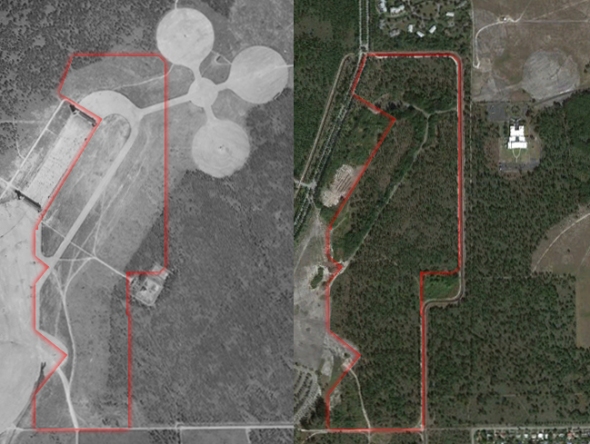
As you can see even pine rockland tracts which have been altered are excellent candidates for restoration and seriously in need of protection. This need is even more urgent for the remaining intact Richmond Heights pine rocklands, which sit in the footprints of Coral Reef Commons and Miami Wilds. Ram Realty and 20th Century Fox developers are still pushing forward on their Coral Reef Commons and Miami Wilds, respectively, and Miami-Dade county is trying to circumvent any environmental regulations protecting or pertaining to these pine rocklands by attempting to declare a massive swath of land around Zoo Miami as a “slum or blighted area.” These developments are both environmentally unacceptable and poorly planned, with no adequate measures taken to address the pine rocklands.
A March and Misinformation
On January 17th hundreds of people marched along Coral Reef Drive, outside Zoo Miami, to support the preservation of the Richmond Heights pine rocklands, the habitat of numerous endemic species including the rare Miami tiger beetle. The Miami Herald reports the group of demonstrators stretched out “at least four blocks” in and around Zoo Miami, near the sites of proposed developments threatening the habitat.
Large portions of these pine rocklands are the sites for Coral Reef Commons, a WalMart-anchored shopping center and apartment complex proposed by Ram Realty, and Miami Wilds, a major amusement park which has been pushed through by Commissioner Dennis Moss and backed by 20th Century Fox.
These pine rocklands have survived comparatively unscathed since the since early logging and military developments on the site in the 1940s and these lands represent a quarter of the 1.8% of the habitat left outside the Everglades National Park. Any further development seriously jeopardizes the rocklands and their inhabitants, principally by further fragmenting the remaining rocklands and stifling brush fires, a necessary ecological cycle for survival of the habitat.
Ram Realty responded to the growing public disapproval in a statement and video tour of the site release the day before the march. I have reproduced their statement below along with my notes:
Efforts to “save” the rocklands are based on a misunderstanding of the true conditions on site
Editors Note: View and download a virtual tour of the Coral Reef Commons site:
Miami, FL – January 16, 2015
Ram Realty Services is dedicated to the restoration of a significant portion of the land that we own.
It should be noted that the Richmond Pine Rockland complex encompasses more than four square miles, of which 74 percent is under public ownership, with an additional 20 percent long ago developed by others.
Purposely deceptive. The former Richmond Naval Air Station covered 2,107 acres (3.29 square miles). Today this area is the site of Zoo Miami, the Gold Coast Railroad Museum, the University of Miami south campus, a U.S. Coast Guard base, and several smaller developments. There is only about one square mile of pine rocklands remaining in the whole site.
Environmentalists opposing the development of the site have continuously misunderstood the facts and the current condition of the property.
I’ve spent significant time conducting research in the Richmond Heights pine rocklands and Ram’s claims are not an honest representation of the site. Presently 47% of the Coral Reef Common (CRC) site is pine rocklands and a further 19% is other, largely hardwood, forest. About 22% of the site is green space, minimally modified from their original state, and a final 12% is heavily modified or developed (buildings, major roads, and parking lots). This is not the heavily developed, hopeless situation the Ram paints.

The Coral Reef Commons development site represents less than three percent of the Richmond Pine Rockland complex, and even less of the total pine rocklands in Miami-Dade County.
Again purposely deceptive. Their figure of 3% is calculated from the total area of the site, not from the area of pine rocklands on the site. There are a total of 585 acres of rocklands on the former Richmond Naval air station out of which 65 acres (11%) sits on the CRC site.
The notion that the Coral Reef Commons site is a pristine forest is erroneous.
The Coral Reef Commons site is primarily (47%) pine rocklands. While not in pristine condition these rocklands have been minimally altered and represent a last chance to preserve this habitat. Out of the original pine rocklands only 1.8% is still standing outside of the Everglades National Park.
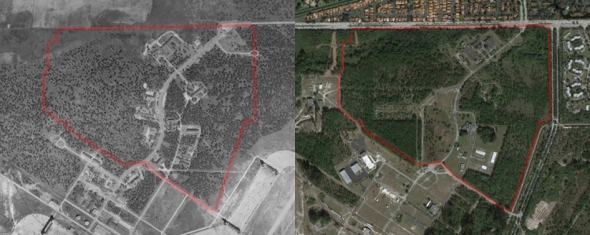
Over the last 70 years the site has been used for military purposes, a medical research facility, commercial buildings, residential buildings, enclosures for animals, an incinerator and blimp bays.
This site does have a unique past (see Paul Freeman’s great webpage and this history of the Naval Air Station) but these developments only comprise 12% of the CRC site (the blimp bays were located just to the south and east of Ram’s property, largely where the Gold Coast Railroad Museum now stands). Today the greatest threat to the area is continued development and the encroachment of invasive species. The present poor condition of these CRC site is due to the lack of any habitat management by the University of Miami, not excessive development. The school even denied requests from myself and other researchers to this and their other properties around Zoo Miami for access to the habitat.
The best prospect for regaining the natural environment is a comprehensive restoration plan such as the one Ram Realty Services is developing with the U.S. Fish and Wildlife Service. Under this plan, almost 40 percent of our property will be restored to its natural native state, set aside and maintained as a natural preserve in perpetuity – a standard never previously achieved in the region.
The Coral Reef Commons site is 137 acres but Ram’s planned preserves total just 43 acres (not all of it pine rockland) – just over 30% of the property. So, contrary to Ram’s claims, under a third of this property will be preserved.
The solution is not to develop over two-thirds of the site and its pine rocklands. Under one-eighth of the CRC site has been developed. Perhaps there is a more appropriate use for this rare habitat than yet another Walmart. Let’s restore and preserve the seven-eighths of the property that is undeveloped and constructively use or mitigate the fraction of the property that is already developed. Pine rocklands are a unique and valuable part of Florida’s natural history and are worth preserving.
Notes
Areas for which exact figures were not available were estimated with the polygon tool in Google Earth and the polygon area calculator on earthpoint.us.
References
URS Corporation, The Institute for Regional Conservation, and Muller and Associates, Inc. 2007. Miami Dade County Environmentally Endangered Lands Program Management Plan, Part II: Management of specific habitat types, Chapter 1: The pine rockland habitat. Submitted to Environmentally Endangered Lands Program, Miami, Florida by URS Corporation. K.A. Bradley, G.D. Gann, M.J. Barry, contributors.

